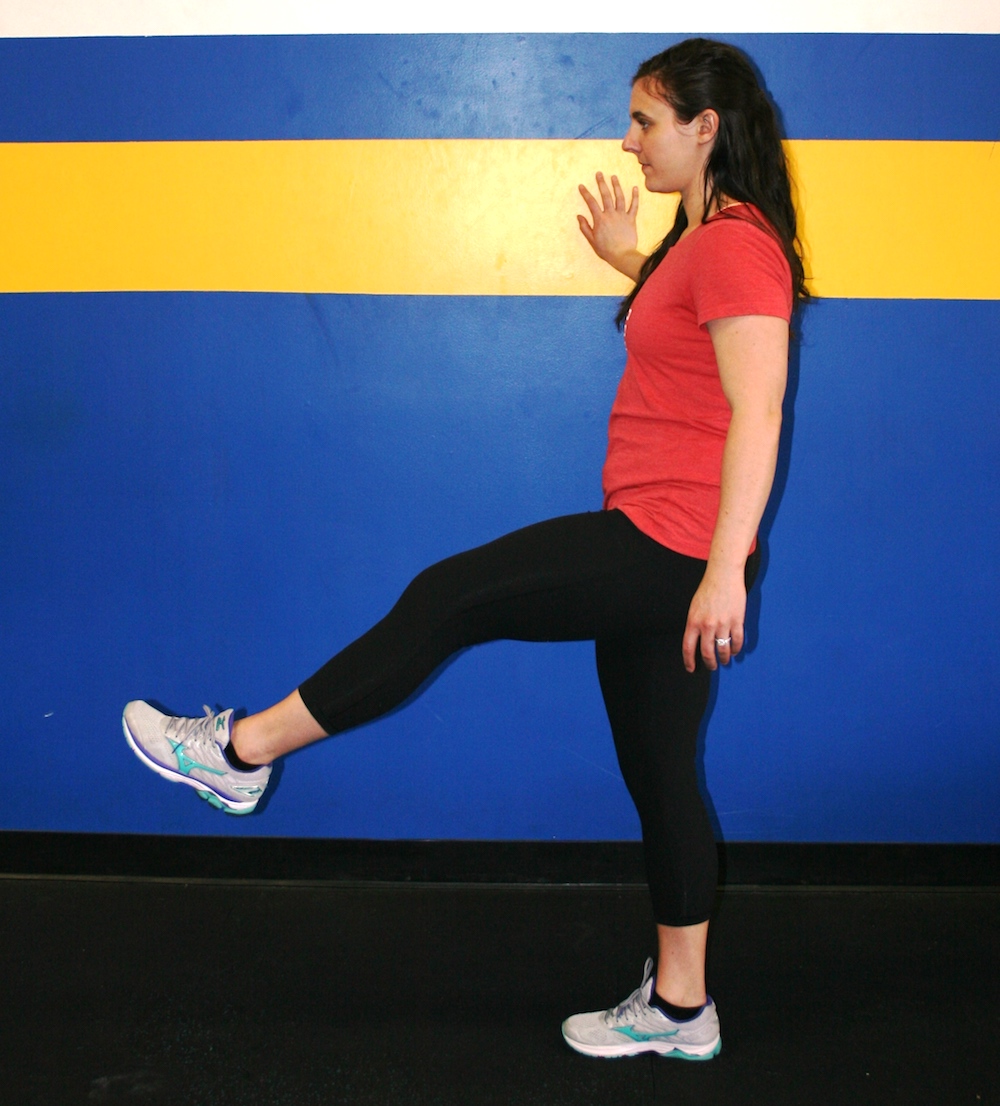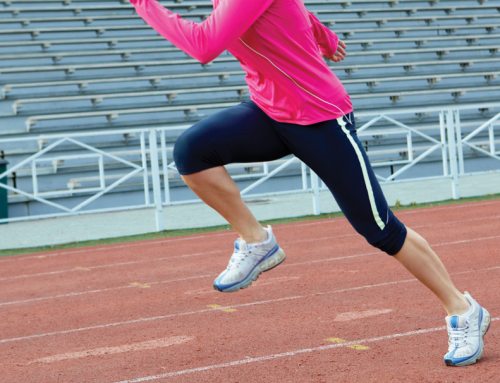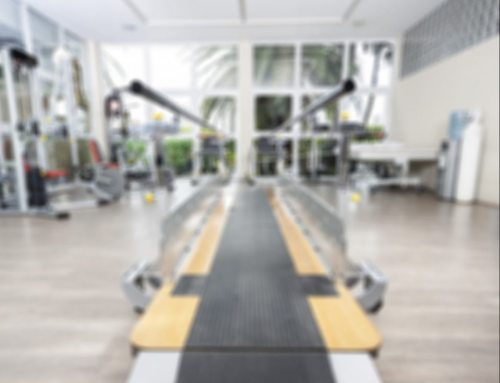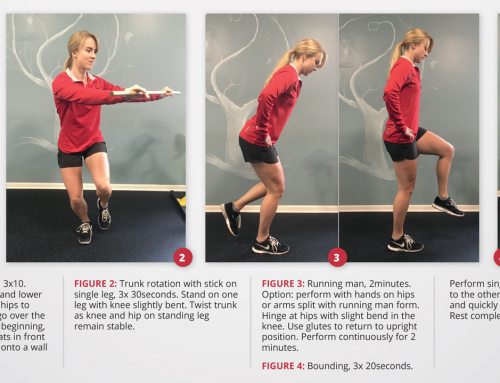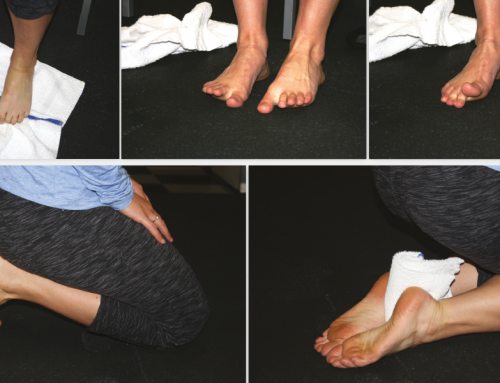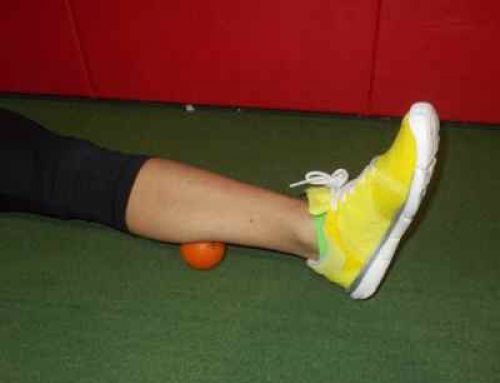By Norah Cetin
Many U.S. cities are seeing an increase in bicycle commuters, according to a U.S. Census Bureau. From 2000 to 2013, bicycle commuting rates in bicycle friendly communities increased 105%. In addition, indoor cycling classes are one of the top group exercises in North America and around the world. More and more Americans have been taking up cycling as a form of exercise in recent years and why not? Cycling is a great way to get moving and is much easier on the joints compared to other forms of exercise such as running.
While any type of exercise is a welcome break to sitting at a desk throughout the work day, the positions of sitting at a desk and on the saddle have many similarities. The knees and hips are flexed, while the shoulders are rounded forward. Even though cycling provides great cardiovascular and lower extremity and core exercise, you are essentially putting your body in the exact same position you have been in all day, which can lead to tightness in the hip flexors and pectoralis muscles. When these muscles get tight, it pulls our body into poor posture of the pelvis and neck. Over time this poor posture can lead to low back, knee, and neck pain.
If you’re a “desk jockey” by day and cyclist by evening (or morning), then by no means should you give up cycling, however, taking the time to perform a few simple stretches can greatly decrease your risk of developing pain and allow lengthening of the muscles that are placed in a shortened position throughout the day. These can be done during the work day and as a warm up or cool down following your ride.
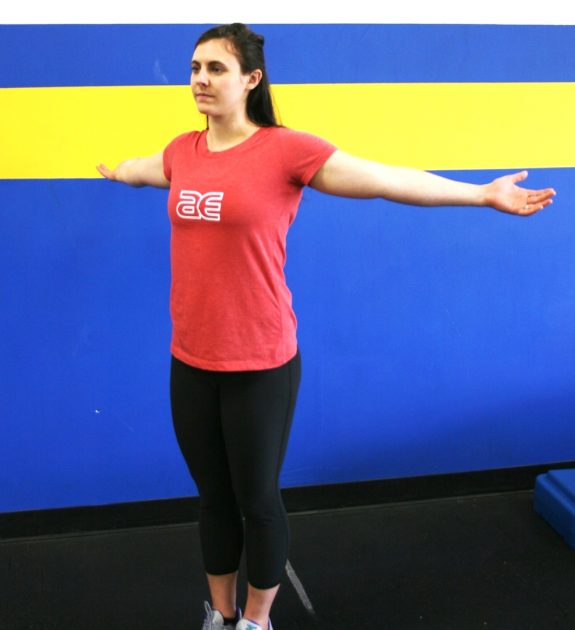 The first step is to open up the chest. This can be performed seated or standing. Place both arms out to the side. Try to rotate your palms up and then continue rotating your palms so they are facing away from you. From there, arch through your upper back and spread your arms as wide as possible. This should give you a nice stretch through the front of your chest and mid spine. You can hold this position for 20-30 seconds or slowly move in and out of the stretch 10-12 times.
The first step is to open up the chest. This can be performed seated or standing. Place both arms out to the side. Try to rotate your palms up and then continue rotating your palms so they are facing away from you. From there, arch through your upper back and spread your arms as wide as possible. This should give you a nice stretch through the front of your chest and mid spine. You can hold this position for 20-30 seconds or slowly move in and out of the stretch 10-12 times.
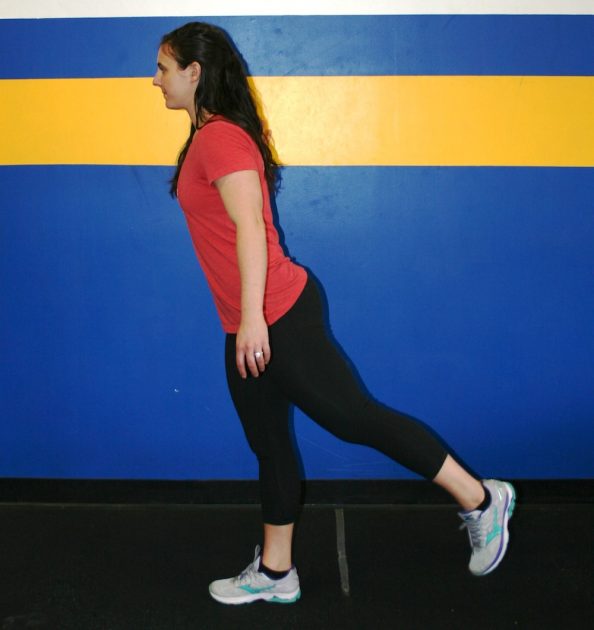 The next step is to open up the hips. The easiest way to do this in the office or on the road is by standing in a tall lunge. Tuck the pelvis under and squeeze the glutes. Without arching the back, slowly lean forward on to the front leg until you feel a stretch through your anterior hip of the back leg. Hold this position for 30 seconds and perform 2 sets on each leg.
The next step is to open up the hips. The easiest way to do this in the office or on the road is by standing in a tall lunge. Tuck the pelvis under and squeeze the glutes. Without arching the back, slowly lean forward on to the front leg until you feel a stretch through your anterior hip of the back leg. Hold this position for 30 seconds and perform 2 sets on each leg.
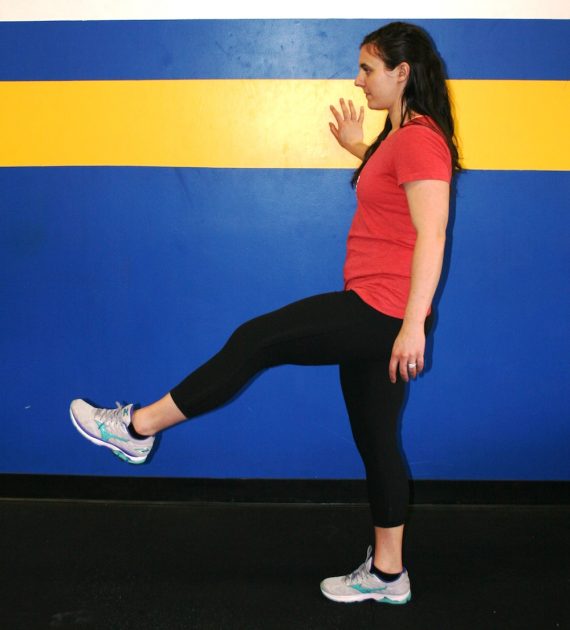 The final mobility exercise, leg swings, is a great one to add to a dynamic warm up. Simply stand tall with something to hang on to for upper body support. Swing one leg forward and backward, while emphasizing a squeeze through the glutes while the leg is back in order to really open up the hip flexor. You can even add a small knee bend when the leg is behind you to get more of a stretch in the quads. Perform 10 legs swings per side. The leg swings can also be done side to side in order to help loosen up the interior and lateral sides of the hip. We want exercise to be a way to prevent morbidity so it is important that our exercise is not increasing our injury risk. Cycling is a fantastic form of exercise but can be detrimental if we don’t take the time to properly stretch and warm up and prevent overuse positioning.
The final mobility exercise, leg swings, is a great one to add to a dynamic warm up. Simply stand tall with something to hang on to for upper body support. Swing one leg forward and backward, while emphasizing a squeeze through the glutes while the leg is back in order to really open up the hip flexor. You can even add a small knee bend when the leg is behind you to get more of a stretch in the quads. Perform 10 legs swings per side. The leg swings can also be done side to side in order to help loosen up the interior and lateral sides of the hip. We want exercise to be a way to prevent morbidity so it is important that our exercise is not increasing our injury risk. Cycling is a fantastic form of exercise but can be detrimental if we don’t take the time to properly stretch and warm up and prevent overuse positioning.
# # #
Norah Cetin is a Doctor of Physical Therapy at ActivEdge Fitness & Sports Performance. She enjoys CrossFit, hiking, scenic bike rides and relaxing at the beach.


